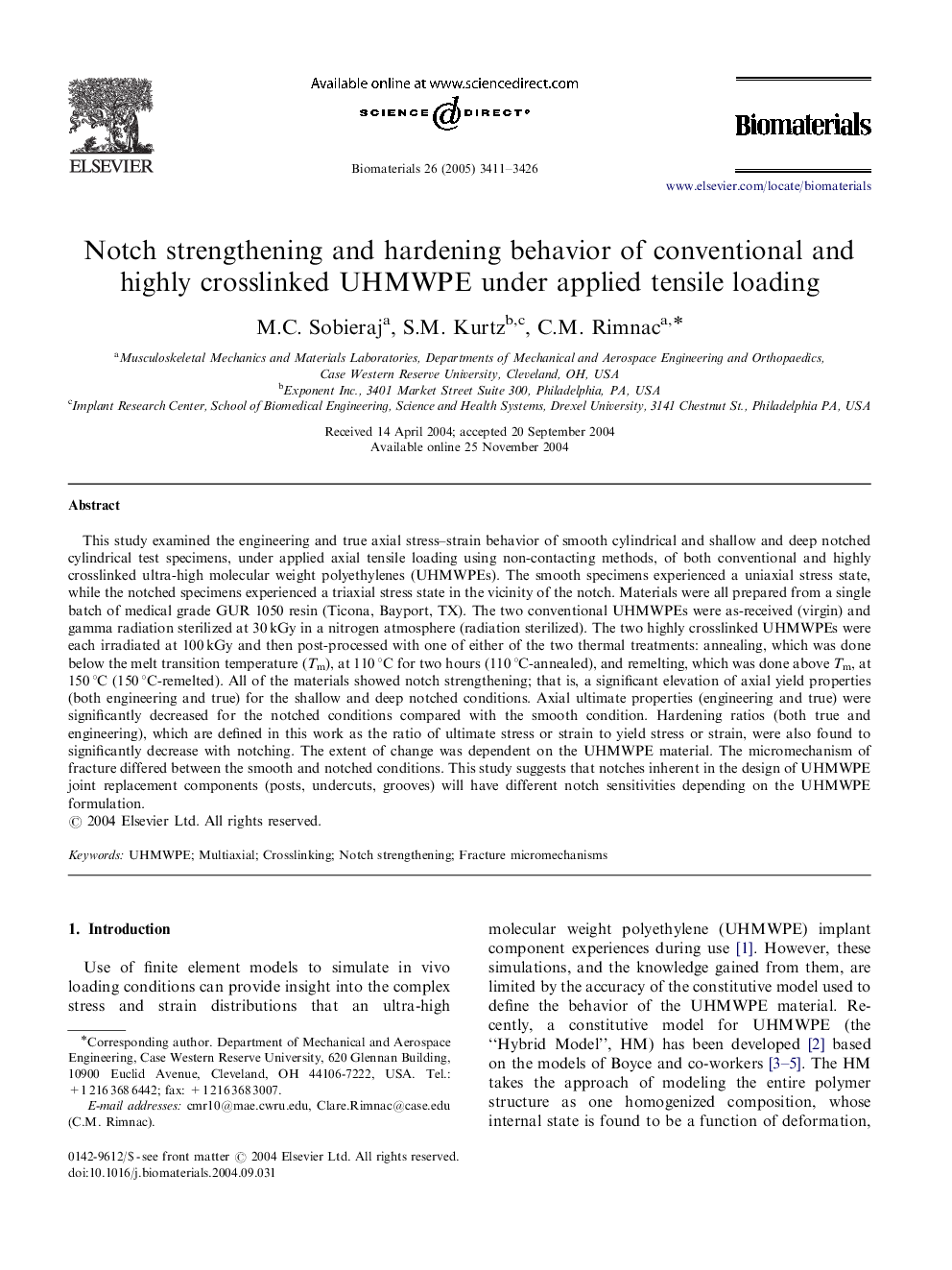| Article ID | Journal | Published Year | Pages | File Type |
|---|---|---|---|---|
| 12720 | Biomaterials | 2005 | 16 Pages |
This study examined the engineering and true axial stress–strain behavior of smooth cylindrical and shallow and deep notched cylindrical test specimens, under applied axial tensile loading using non-contacting methods, of both conventional and highly crosslinked ultra-high molecular weight polyethylenes (UHMWPEs). The smooth specimens experienced a uniaxial stress state, while the notched specimens experienced a triaxial stress state in the vicinity of the notch. Materials were all prepared from a single batch of medical grade GUR 1050 resin (Ticona, Bayport, TX). The two conventional UHMWPEs were as-received (virgin) and gamma radiation sterilized at 30 kGy in a nitrogen atmosphere (radiation sterilized). The two highly crosslinked UHMWPEs were each irradiated at 100 kGy and then post-processed with one of either of the two thermal treatments: annealing, which was done below the melt transition temperature (Tm), at 110 °C for two hours (110 °C-annealed), and remelting, which was done above Tm, at 150 °C (150 °C-remelted). All of the materials showed notch strengthening; that is, a significant elevation of axial yield properties (both engineering and true) for the shallow and deep notched conditions. Axial ultimate properties (engineering and true) were significantly decreased for the notched conditions compared with the smooth condition. Hardening ratios (both true and engineering), which are defined in this work as the ratio of ultimate stress or strain to yield stress or strain, were also found to significantly decrease with notching. The extent of change was dependent on the UHMWPE material. The micromechanism of fracture differed between the smooth and notched conditions. This study suggests that notches inherent in the design of UHMWPE joint replacement components (posts, undercuts, grooves) will have different notch sensitivities depending on the UHMWPE formulation.
